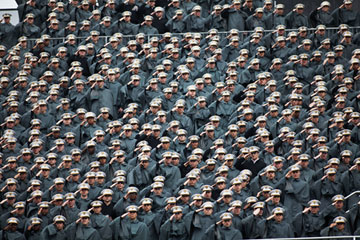
Cadets at graduation ceremonies at West Point, N.Y.
On Oct. 5, as the sun was just rising in a leafy suburb of Tripoli, the U.S. Army's Delta Force pulled off a daring dawn snatch of alleged al-Qaeda operative Nazih Abdul-Hamed al-Ruqai (more commonly known as Anas al-Liby) without firing a shot. "Hooahs!" of approval echoed through Delta headquarters at Fort Bragg, N.C., and in the Army corridors at the Pentagon.
The al-Liby grab was a reminder that the Army, after generations of preparing to fight complicated land wars, is more likely to face enemies that are terrorists, insurgents and other small-bore bad guys than large standing armies. That's going to require bulking up its special-operations forces, shrinking the standing army it has maintained since World War II and reexamining its faith in all kinds of sacred cows.
As Washington winds down two long and expensive wars (one, in Afghanistan, now entering its 13th year), unpleasant choices are the order of the day at the Pentagon, where the 10% cut required by sequestration is already inflicting budgetary pain.
But nowhere is the challenge as desperate or the bureaucracy so resistant to change as it is in the Army. It has 534,000 active-duty troops today and is trying to hang on to 490,000 by 2015. But deeper cuts look likely, and many experts believe the service could shrink to 390,000 by 2023. The Army's core mission is anyone's guess in an era of pilotless drones and spooky commandos. But its generals are slow to face the new reality.

